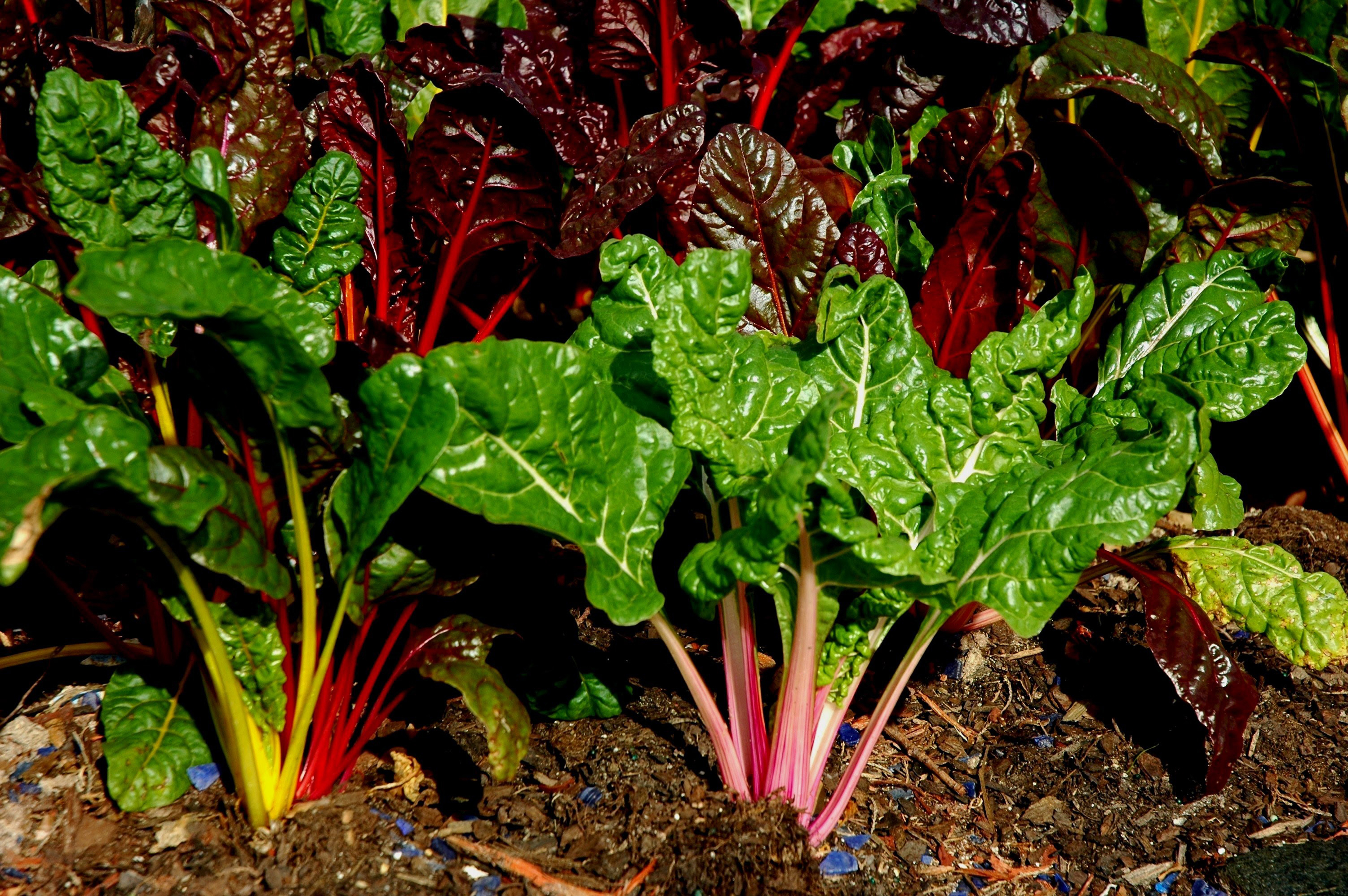Farm & Ranch
The Garden Guy: Swiss Chard – Ornamental, Wonderfully Edible

By Norman Winter
It seems wherever I go, I’m seeing Swiss chard. This showy cool-season plant, so-etimes called a beet without a bottom, is showing up in the landscape, in mixed containers and there it is available in the local grocery store.
Is it an ornamental or an edible, you might ask. The answer is both. Then you might wonder, do you eat it fresh or do you cook it? Again, the answer would be both.
It has been almost 20 years since the All-American Selections Bright Lights showed up on the scene. There was nothing to not love about this plant that had multicolored stems that were so ornamental looking yet provided that glorious glossy foliage that became a fresh spinach substitute. Swiss chard is known botanically as Beta vulgaris ssp. vulgaris, showing it is indeed a leafy beet.
Holy cow, now you look at a catalogue and you’ll see Bright Lights there but also single colors like Oriole, El Dorado, Magenta Sunset, Ruby Red, and the bi-colored Peppermint.
The same thing can be found at your grocer. You will probably have three to four varieties to choose from for your culinary artistry in the kitchen.
Swiss chard is ready to harvest baby green within 30 days or a mature harvest in 60. Cut or break off the outer leaves when they are 12 to 18 inches tall. You may cut them when they are smaller and more tender.
Like many plants, it seems production is lengthened by harvesting. The stalks can be cooked like asparagus. Cut the stems into two- or three-inch lengths and simmer in boiling salted water until tender. The leaves can be cooked or eaten fresh in tossed salads.
You may be thinking, perish the thought, you simply want the texture and color in the landscape or designer-styled container.
To read more pick up a copy of the December 2018 NTFR issue. To subscribe call 940-872-5922.
Farm & Ranch
Hazards of Backyard Poultry

By Barry Whitworth, DVM
Having backyard poultry is a popular agriculture enterprise. According to the United States Department of Agriculture, 0.8 percent of all households in the United States have chickens. People keep chickens for a variety of reasons with table eggs being one of the more common reasons.
Unfortunately, some of these poultry producers are not aware of the hazards that come with keeping poultry because many times they carry pathogens but appear healthy.
Chickens are carriers of several zoonotic diseases. These are diseases that can be passed from animals to humans. According to a recent survey in Pennsylvania, a majority of backyard poultry producers were aware of the dangers of avian influenza. However, this study also revealed that far fewer producers were aware of the risk of possible exposure to Salmonella and Campylobacter.
The lack of knowledge about the hazards of raising poultry likely contributes to the continued issues of Salmonella outbreaks associated with backyard poultry. In 2023, the Centers for Disease Control and Prevention reported 1,072 illnesses of Salmonella linked to backyard poultry, and 272 of those patients required hospitalization. Oklahoma reported 43 individuals with the disease.
To read more, pick up a copy of the April issue of NTFR magazine. To subscribe by mail, call 940-872-5922.
Farm & Ranch
Ag Elsewhere: Wyoming

By Tressa Lawrence
Babies are tucked away in every nook and cranny. Many ranchers across Wyoming have baby animals popping up all over this time of year.
Farm & Ranch
Ag Elsewhere: Montana

By Lindsey Monk
Another load of grain in to keep feeding the calves until the green grass can really start popping.
-

 Country Lifestyles1 year ago
Country Lifestyles1 year agoScott & Stacey Schumacher: A Growth Mindset
-

 Equine7 months ago
Equine7 months agoThe Will to Win
-

 Country Lifestyles7 years ago
Country Lifestyles7 years agoStyle Your Profile – What your style cowboy hat says about you and new trends in 2017
-

 Country Lifestyles4 years ago
Country Lifestyles4 years agoAmber Crawford, Breakaway Roper
-

 HOME7 years ago
HOME7 years agoGrazing North Texas – Wilman Lovegrass
-

 Country Lifestyles7 years ago
Country Lifestyles7 years agoDecember 2016 Profile, Rusty Riddle – The Riddle Way
-

 Country Lifestyles8 years ago
Country Lifestyles8 years agoJune 2016 Profile – The man behind the mic: Bob Tallman
-

 Outdoor9 years ago
Outdoor9 years agoButtercup or Primrose?






